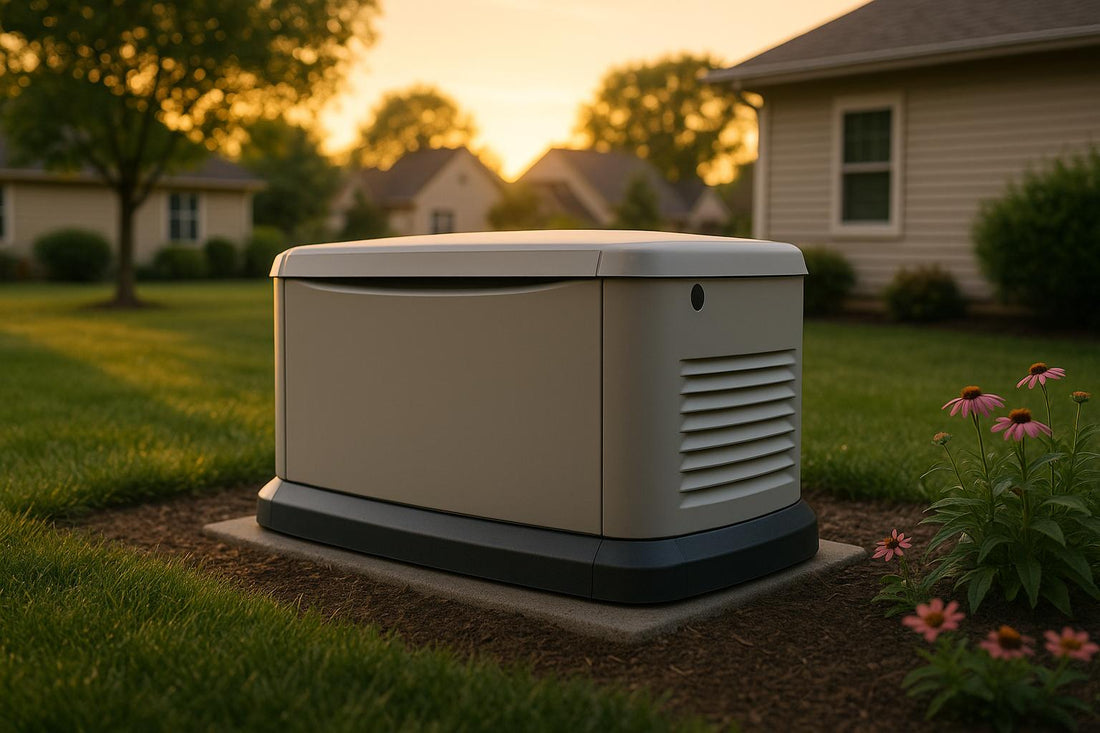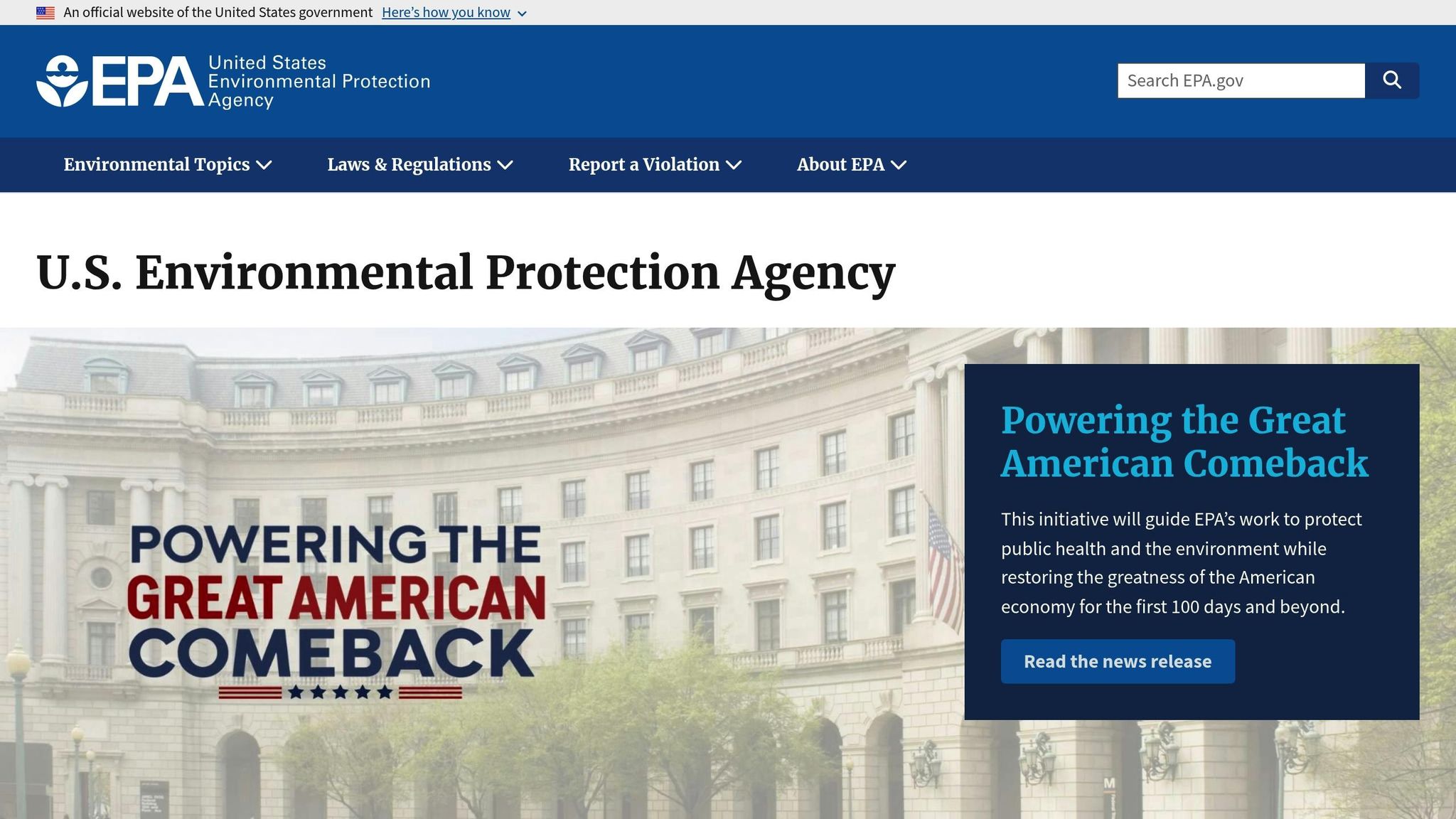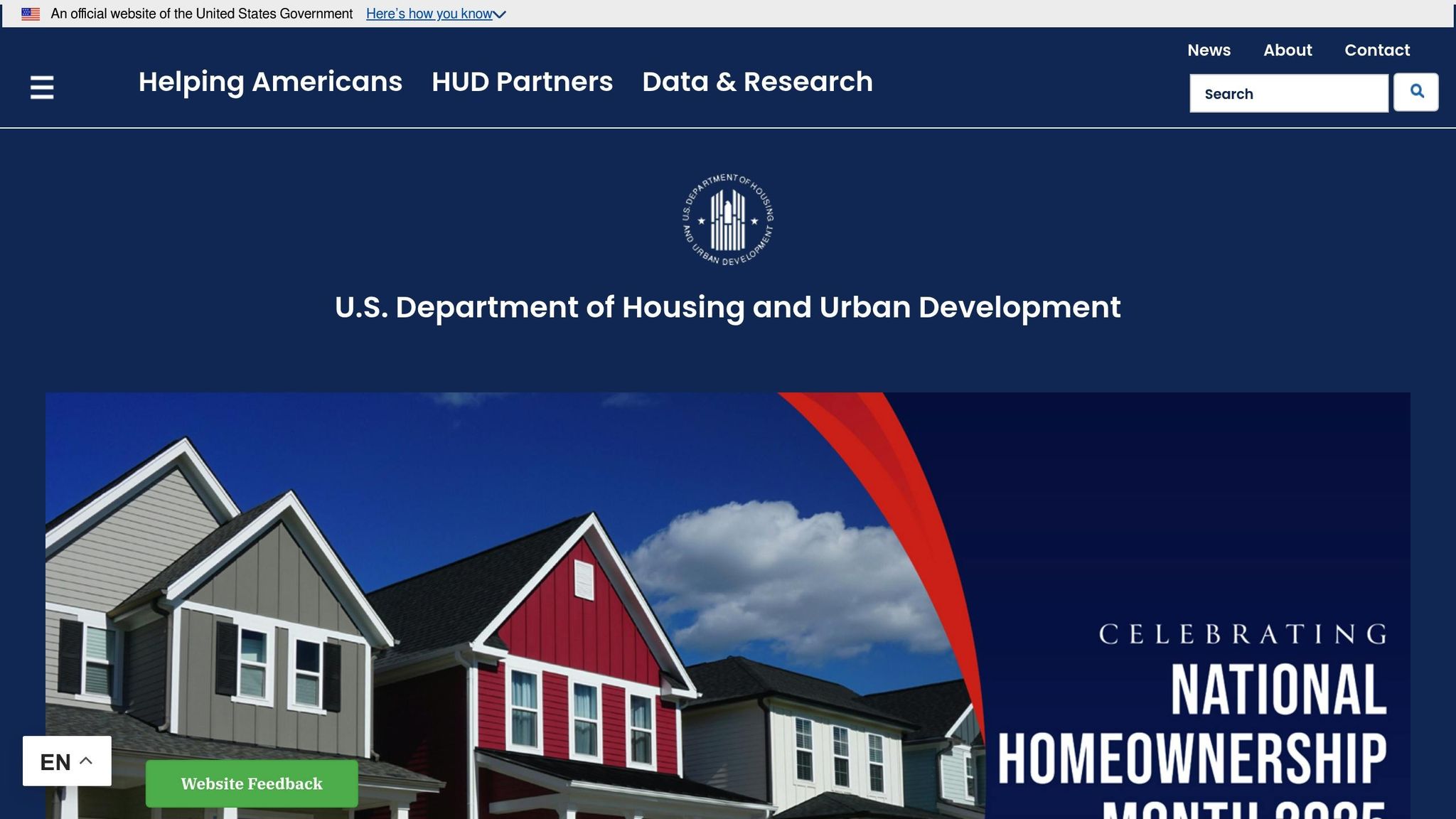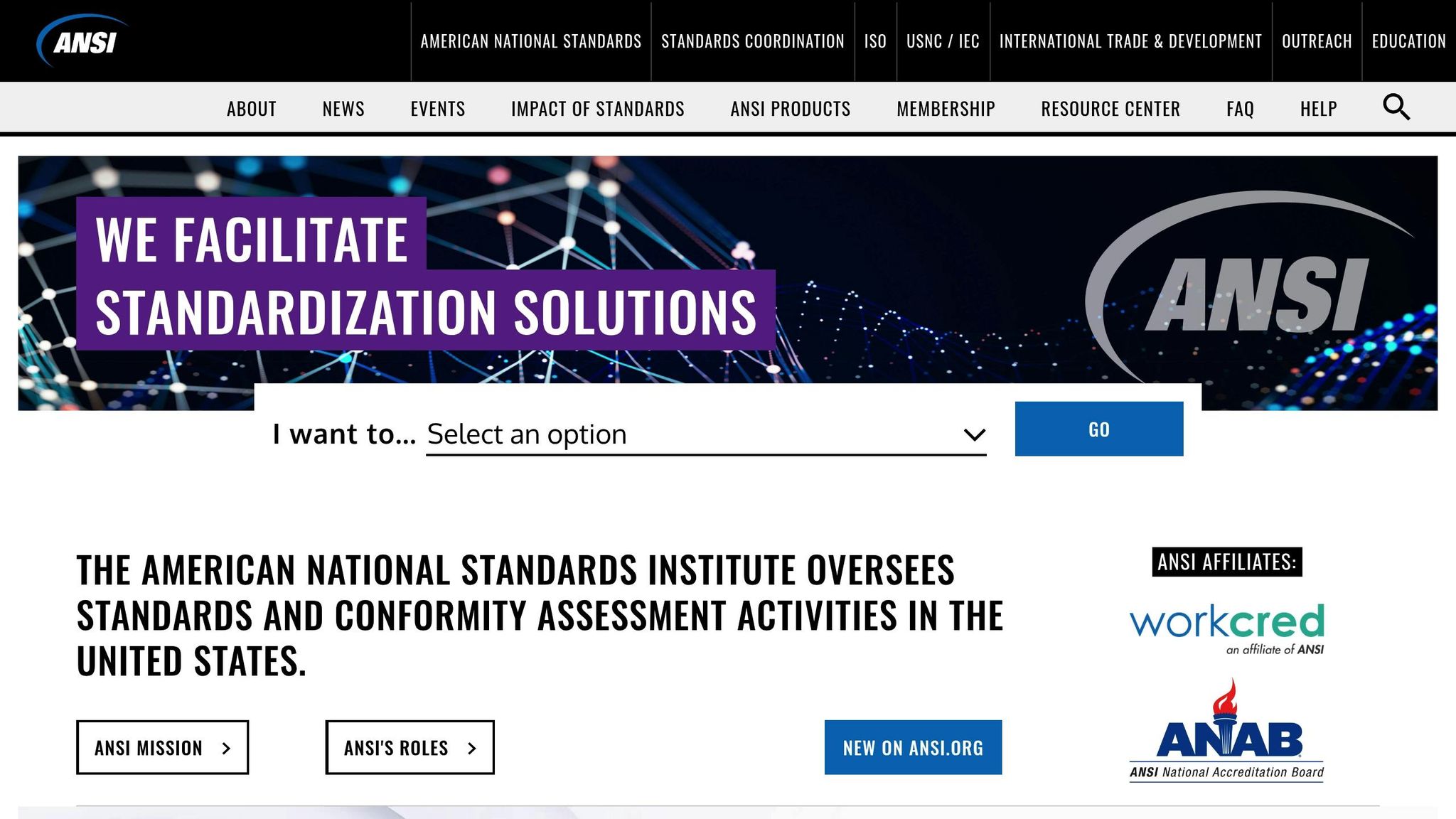
Generator Noise Regulations: Key Standards
Share
Generator noise regulations are essential to protect communities from excessive noise and ensure compliance with legal standards. Here's what you need to know:
- Health Impact: Prolonged exposure to generator noise can cause stress, high blood pressure, hearing damage, and sleep disturbances.
- Noise Limits: Residential areas usually allow up to 60 dB during the day and 55 dB at night. Commercial and industrial zones have higher limits, but exceeding them can lead to fines ($500+ per offense).
- Key Authorities: Regulations are enforced by federal, state, and local governments. Federal agencies like the EPA and HUD set guidelines, while local ordinances define specific limits.
- Measurement Standards: Generator noise is measured in decibels (dB) using the A-weighted scale (dBA). Untreated generator noise can exceed 100 dB, far above most limits.
- Compliance Tips: Choose low-noise generators, use noise-reducing solutions like barriers and mufflers, and maintain your generator regularly to stay within legal limits.
Quick Comparison of Noise Limits by Application:
| Application | Daytime Limit (dB) | Nighttime Limit (dB) | Typical Authority |
|---|---|---|---|
| Residential Areas | <60 | <55 | Local Ordinances |
| Commercial Buildings | 70–75 | Not restricted | Local Ordinances |
| Construction Sites | <85 | <80 | Local Ordinances, OSHA |
| Industrial Facilities | <80 | <80 | OSHA, Local Ordinances |
| Healthcare Facilities | 65–75 (outdoors) | ~45 (indoors) | Hospital Regulations |
Takeaway: To avoid fines and maintain peace in your community, select quieter generators, install noise control solutions, and stay informed about local regulations. Noise compliance is not just about following rules - it’s about fostering a better living environment.
#quietGenerator # inverterGenerator
Federal and National Generator Noise Standards
Federal agencies establish baseline noise standards to regulate generator noise levels across the nation. These standards ensure generators operate within permissible noise limits while adhering to safety and environmental guidelines. Below, we’ll explore key federal standards, including the EPA and HUD guidelines, and delve into how ANSI standards enhance portable generator safety.
U.S. Environmental Protection Agency (EPA) Noise Guidelines

The EPA has been a key player in federal noise control since the 1970s, primarily under the Noise Control Act of 1972. This legislation enables the EPA to oversee federal noise research and establish noise emission standards for various products, including generators.
Although the EPA doesn’t set specific decibel limits for generators like local ordinances, it regulates them through emission standards under the Clean Air Act. These standards cover both on-road and off-road engines, including stationary diesel generator sets. The EPA’s power tier system categorizes generators based on pollutant emissions, with most modern engines required to meet Tier 4 Final Level standards.
What does Tier 4 mean? It calls for a 90% reduction in nitrogen oxides (NOx), particulate matter, and hydrocarbons. Since 2015, all non-road engines must comply with Tier 4 regulations, though standby and emergency-use generators are held to the less stringent Tier 2 and Tier 3 standards. As noted in Equipment Today in July 2014:
"Tier 4 is the law of the land. It is no longer avoidable if you want to purchase new equipment".
Non-compliance with EPA standards can result in hefty fines - up to $25,000 per day. Additionally, the EPA allows stationary internal combustion engines unlimited operation during emergencies, but limits nonemergency use to 100 hours annually.
Department of Housing and Urban Development (HUD) Standards

While the EPA focuses on emissions, HUD addresses noise impacts, particularly in housing projects. HUD establishes national standards to protect communities from excessive noise, particularly near federally assisted housing projects. These standards, outlined in 24 CFR Part 51, Subpart B, impose strict noise exposure limits.
HUD uses a day-night average sound level (DNL) system to measure noise and sets clear thresholds. The exterior noise goal is a DNL of 55 decibels, while the interior goal is a DNL of 45 decibels. Any site exceeding a DNL of 65 decibels is classified as a noise-impacted area.
Noise exposure is divided into three zones, each with specific requirements:
| Noise Zone | DNL (in Decibels) | Requirements |
|---|---|---|
| Acceptable | Not exceeding 65 dB | No special requirements. |
| Normally Unacceptable | Above 65 dB to 75 dB | Environmental assessment and sound attenuation required for new construction; encouraged for major rehab. |
| Unacceptable | Above 75 dB | Environmental impact statement required; sound attenuation mandatory for new construction with approval. |
In "Normally Unacceptable" zones, HUD mandates at least 5 dB of additional sound attenuation for areas with a DNL between 65–70 dB, and 10 dB for areas with a DNL between 70–75 dB. These benchmarks are essential for selecting generators that meet both federal and local noise standards.
ANSI G300 Standards for Portable Generators

The ANSI/PGMA G300 standard is the leading safety and performance guideline for portable generators, covering units up to 15 kW, including inverters, open-frame models, and construction generators.
The latest version, ANSI/PGMA G300-2023, takes effect in January 2024 and introduces updates to carbon monoxide shutoff systems and natural gas requirements. This builds on the G300-2018 standard by mandating advanced carbon monoxide safety features in all new models.
One standout innovation is Honda Power Equipment’s CO-MINDER™ system, launched in 2020. This technology continuously monitors carbon monoxide levels and automatically shuts down the generator if CO reaches 800 ppm instantly or averages 400 ppm over 10 minutes. Will Walton, Vice President of Honda Power Equipment, highlighted their commitment:
"As a leader in the portable generator industry, Honda Power Equipment has been highly supportive in the safety standards adopted by ANSI/PGMA G300-2018. In 2020, we are proud to be the industry's first manufacturer to commit to installing CO detection devices on 100 percent of our portable generators".
When purchasing a generator, ensure it complies with EPA emission standards for its manufacturing year. Opt for Tier 4 models to align with current regulations and access advanced technology. For portable generators, confirm compliance with the latest G300-2023 requirements, particularly for carbon monoxide safety. This ensures your generator meets both safety and noise standards effectively.
State and Local Noise Ordinances
State and local regulations play a crucial role in managing generator noise, working alongside federal standards to ensure compliance and maintain community harmony. While federal guidelines establish the groundwork, state and local governments introduce rules tailored to the specific needs of their jurisdictions. These rules can differ widely, with some areas enforcing strict decibel limits and others relying on broader definitions like "unreasonable noise."
State-Level Noise Regulations
At the state level, noise control often serves as a framework that local municipalities can adapt to their unique needs. These frameworks generally prioritize public health and welfare over setting precise decibel limits for generators. Instead, states empower local authorities to address community-specific concerns. Many states even provide model ordinances that municipalities can adopt or tweak as needed. These templates often include time-based noise restrictions, with higher allowable levels during the day and stricter limits at night. This state-level guidance serves as a foundation for the more detailed local rules.
Local Noise Ordinances and Zoning Laws
Local ordinances are where the rules get specific. Cities and towns establish noise regulations that directly impact generator owners, often tailoring them to zoning classifications and time of day. For example, commercial and industrial zones might have different noise tolerance levels compared to residential areas.
Many ordinances set decibel limits depending on the type of property. For residential areas (including mixed-use zones), limits might be around 65 dBA during the day and drop to 55 dBA at night. Nonresidential properties, on the other hand, might allow slightly higher levels, such as 67 dBA during the day and 62 dBA at night. Some local laws are highly detailed, specifying exact noise levels and measurement locations, such as at property lines or the nearest residential building. Others take a simpler approach, focusing on whether the noise is "excessive".
Homeowners Associations (HOAs) often add another layer of regulation. These groups may enforce stricter rules than municipal ordinances, requiring generator owners to meet both sets of standards, with the stricter rule taking precedence. In some cases, industrial facilities may even face specific operational restrictions, such as running generators only during certain hours to minimize noise from heavy machinery. These rules highlight the importance of choosing quieter generators and keeping them well-maintained.
Compliance and Enforcement Practices
Understanding local noise regulations is essential for staying in compliance. Local authorities use various methods to monitor and enforce these rules. When a generator violates noise ordinances, law enforcement may visit the site, measure sound levels, and issue fines based on their findings [8, 19]. Often, enforcement is triggered by complaints from neighbors or nearby businesses, with most cases starting from citizen reports rather than proactive monitoring.
Enforcement typically follows a step-by-step approach. First-time offenders might receive a warning or a notice to correct the issue, while repeated violations can lead to harsher penalties. For instance, under Section 415 of the California Penal Code, creating loud and unreasonable noise to disturb others is illegal. Violators can face up to 90 days in jail and/or a $400 fine. Persistent non-compliance might even result in cease-and-desist orders, requiring generators to be shut down until they meet local standards.
To ensure compliance, start by researching your local ordinances - many are readily available online. You can also contact your local code enforcement office or a non-emergency police line for guidance. Some communities provide additional resources through environmental health departments or building permit offices. Since noise regulations can vary greatly, understanding your local rules is a critical step before installing or operating a generator.
How to Comply with Generator Noise Regulations
Staying within noise regulations for generators requires careful planning, from choosing the right equipment to maintaining it properly. Whether you're setting up a backup generator for your home or managing commercial power systems, following these steps can help you meet noise standards while keeping your power supply reliable.
Selecting Low-Noise Generators
The first step in compliance is choosing a generator with sound levels that align with local regulations. Manufacturers provide decibel ratings that indicate how noisy their units are, and these numbers are key when comparing options. Residential generators are often designed to be quieter, but even commercial models must adhere to noise ordinances.
When evaluating generators, pay close attention to decibel ratings. For instance, some Honda models operate at just under 68 decibels, while similar units from other brands might reach 71.5 decibels. Even small differences in decibel levels can noticeably affect perceived noise.
Inverter generators are a smart choice for quieter operation. Unlike traditional generators, they adjust engine speed based on power demand, which not only improves fuel efficiency but also reduces noise during lighter loads. This can be especially helpful in areas with strict noise limits.
Your installation environment also matters. Residential zones often have nighttime noise limits around 55 dBA, so you’ll need a generator that operates well below that threshold. In commercial settings near residential areas, stricter standards may apply. Beyond selecting a quieter model, additional noise control measures can help ensure compliance.
Noise Reduction Solutions
Even with a quiet generator, extra steps might be needed to reduce noise further. Placement plays a big role - doubling the distance between your generator and noise-sensitive areas can lower sound levels by 6 dB, which could mean the difference between meeting or violating regulations.
Acoustic barriers and enclosures are effective tools for noise control. These can reduce noise by at least 10 dB, and custom-built enclosures may achieve even greater reductions by trapping and absorbing sound waves. Just remember to ensure proper ventilation and airflow to keep the generator running safely.
Anti-vibration mounts are another useful option. These mounts isolate the generator, preventing vibrations from traveling through hard surfaces like concrete and amplifying noise. Installing them under your generator can significantly reduce the impact on surrounding areas.
Modifying the exhaust system can also help. Adding mufflers or silencers to the exhaust can cut down noise output considerably. Redirecting exhaust pipes away from sensitive areas is another effective strategy, as long as it doesn’t interfere with proper exhaust flow or safety.
For larger installations, attenuators provide advanced noise control. They use specially designed splitters to absorb sound energy as air passes through. Additionally, placing generators on softer surfaces like grass or rubber mats can reduce vibrations compared to hard surfaces such as concrete or asphalt.
Regular Maintenance for Continued Compliance
Keeping your generator in good condition is essential for maintaining quiet operation. Routine maintenance - like oil changes, air filter replacements, and spark plug checks - ensures the engine runs smoothly and minimizes unwanted noise. Replacing worn parts, such as fans or mufflers, and tightening loose components can also help prevent rattling during operation.
Lubricating moving parts like bearings and alternator components reduces friction and vibration, keeping noise levels in check. Regularly testing and monitoring sound output can detect potential issues early, allowing you to address them before they become compliance problems.
Documenting maintenance activities - such as service dates, part replacements, and noise level measurements - provides proof of your compliance efforts. Professional inspections by qualified technicians can identify hidden noise issues and ensure your generator stays within legal limits throughout its lifespan. Regular upkeep not only maintains performance but also ensures you remain within noise regulations over time.
sbb-itb-501186b
Noise Standards by Application Type
Understanding noise requirements is crucial when choosing a generator and implementing noise control measures. Noise standards for generators can vary widely depending on the environment - some settings require minimal sound, while others allow for higher noise levels.
Using noise measurement techniques and federal guidelines as a foundation, these application-specific limits cater to the environments where generators are used. Below, we outline noise limits based on different applications to help guide your generator selection.
Noise Level Limits by Application
The noise standards for generators are largely determined by their installation environment:
- Residential Areas: Noise regulations typically restrict daytime levels to below 60 dB and nighttime levels to below 55 dB to maintain a quiet living space.
- Commercial and Office Buildings: These environments allow for higher noise levels, with limits around 70–75 dB during business hours. Nighttime restrictions are usually not defined.
- Construction Sites: Recognizing the naturally noisy nature of construction, daytime noise is capped at 85 dB, while nighttime levels are limited to 80 dB.
- Industrial Facilities: Noise levels must be kept below 80 dB to balance operational efficiency with worker safety, as prolonged exposure to noise above 85 dB can be hazardous.
- Healthcare Facilities: These spaces present unique challenges. While regulatory limits range between 65 and 75 dB, indoor areas like patient rooms often aim for quieter levels, around 45 dB, to create a calming atmosphere.
- Outdoor Events: Noise levels are generally limited to 70–75 dB, though specific restrictions depend on local permits and proximity to residential areas.
Here's a summary of these key noise standards:
| Application | Daytime Noise Limit (dB) | Nighttime Noise Limit (dB) | Typical Regulatory Authority |
|---|---|---|---|
| Residential Areas | <60 | <55 | Local Ordinances |
| Commercial Buildings | 70–75 | Not typically restricted | Local Ordinances |
| Construction Sites | <85 | <80 | Local Ordinances, OSHA |
| Industrial Facilities | <80 | <80 | OSHA, Local Ordinances |
| Healthcare Facilities | 65–75 | ~45 (indoors) / 45–65 (outdoors) | Hospital Regulations, Local Codes |
| Outdoor Events | 70–75 | Event-dependent | Event Permits, Local Ordinances |
These benchmarks are essential when aligning generator noise levels with the requirements of specific settings. Untreated generator noise can exceed 100 dB(A) - for example, a 50 kW diesel generator produces around 85 dB(A), while larger units with 1500 kW engines can reach up to 105 dB(A).
Portable generators, typically ranging from 500 W to 17.5 kW, often have less sound insulation compared to stationary generators. Stationary units, which range from 3 kW to several hundred kW, are designed with advanced noise control measures. However, their placement near occupied spaces demands careful acoustic planning.
The importance of noise control is a growing focus in the industry. Dennis Aaberg, a Senior Acoustics Specialist at Cummins Power Generation Inc., emphasizes this shift:
"With the growth of standby, prime and peaking power installations in highly populated areas, design engineers have focused their attention on understanding how generator set noise is propagated and controlled."
When choosing a generator, ensure its noise levels comply with your environment's regulations. Some states and communities also use octave band frequency standards to address low-frequency noise. Properly matching your generator's noise performance to these standards ensures compliance while maintaining reliable power delivery.
Conclusion
This guide has explored the key noise standards and practical ways to comply with them, highlighting some important takeaways. Meeting generator noise regulations not only protects public health but also strengthens community relationships and helps avoid hefty fines, which can exceed $500 per violation.
Noise regulations operate across multiple levels, from federal EPA guidelines to specific local rules. For example, Montgomery County’s strict 55 dBA limit showcases the importance of addressing noise issues early on. Generator owners must navigate federal, state, and local standards simultaneously to ensure full compliance.
Beyond avoiding fines, prioritizing noise control reflects a sense of responsibility and fosters goodwill within the community. Routine testing and maintenance help keep generators compliant while also improving their performance and extending their lifespan.
The risks are particularly clear when you consider that generator noise often far exceeds the stricter limits set for residential areas. This makes it much more cost-effective to choose low-noise equipment and implement noise reduction strategies from the beginning, rather than dealing with expensive retrofits later.
Selecting generators that meet noise standards not only prevents penalties but also promotes a more harmonious community environment. Whether you’re using a portable generator for temporary power or managing a large standby system for critical operations, understanding your noise requirements and taking proactive steps to address them will protect your investment and build trust with those around you. As generator use continues to grow in densely populated areas, noise compliance will become an even more critical factor for successful operation.
For those in need of reliable power generation equipment that adheres to modern noise standards, platforms like Electrical Trader offer a range of new and used generators with detailed specifications to help you stay compliant from day one.
FAQs
How can I reduce generator noise to meet local regulations?
To keep generator noise in check and meet local regulations, here are some practical steps you can take:
- Install soundproof enclosures: These help contain and dampen noise effectively.
- Use vibration isolation mounts: These reduce mechanical vibrations that contribute to noise.
- Opt for low-noise generator models: Some generators are specifically designed to operate more quietly.
Beyond these measures, consider running your generator during the day when ambient noise is higher, placing it farther from areas sensitive to noise, or setting up barriers like walls or fences to block sound. Regular maintenance is equally important - tightening loose parts and ensuring proper lubrication not only reduces noise but also helps you stay within federal and state standards in the U.S.
What are the key differences between EPA and HUD noise guidelines, and how can I choose a generator suitable for residential areas?
Understanding Noise Guidelines for Generators
The EPA noise guidelines, established under the Noise Control Act of 1972, aim to regulate overall noise levels to safeguard public health. However, these guidelines don't specify noise limits for generators. On the other hand, HUD guidelines provide clear standards for residential areas, recommending that outdoor noise levels stay below 55 decibels and indoor levels remain under 45 decibels in high-noise zones.
If you're selecting a generator for home use, it's wise to look for models featuring low-noise technology or built-in soundproofing. To reduce noise impact, position the generator at least 20 feet away from living spaces and review local noise regulations to ensure you're in compliance. Proper placement and quieter operation can help limit disruptions while keeping your generator within acceptable noise levels.
How can I ensure my generator stays compliant with noise regulations over time?
How to Keep Your Generator Compliant with Noise Regulations
Staying within noise regulations for your generator doesn’t have to be complicated. Start with regular maintenance and servicing - this helps prevent unnecessary noise caused by wear and tear or mechanical issues. A well-maintained generator is not only quieter but also operates more efficiently.
Placement matters, too. Position your generator away from areas where noise could be a problem, like near homes or offices. Make sure it complies with local zoning rules, which often dictate where generators can be installed.
To further reduce noise, consider using noise-reduction tools. Options like acoustic enclosures, anti-vibration pads, or soundproofing materials can make a big difference in lowering sound levels. These additions are especially helpful if your generator is in a noise-sensitive location.
Lastly, stay informed about local noise ordinances. Regulations vary depending on your area, with acceptable noise levels typically falling between 45 and 72 dB(A). Knowing the specific rules in your location ensures you’re always in compliance.
By combining proper maintenance, thoughtful placement, and sound-reducing solutions, you can keep your generator quiet and within legal limits while ensuring it continues to perform reliably.
Related posts
- Voltage Regulation Problems: Causes and Fixes
- Ultimate Guide to Standby and Prime Generators
- How to Improve Generator Fuel Efficiency
- Industrial Generator Sizing: Key Factors
